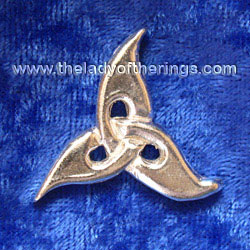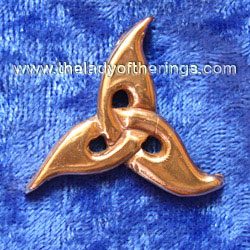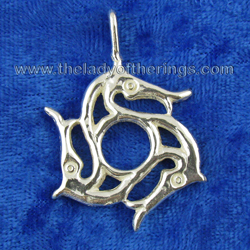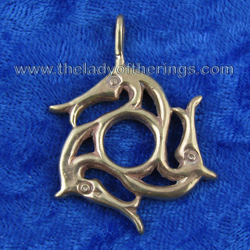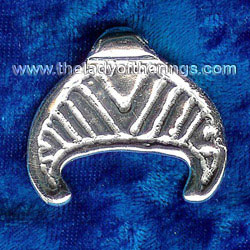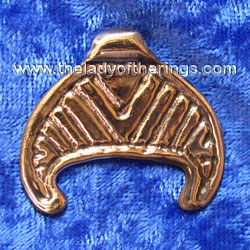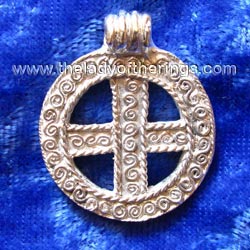The Lady of the Rings
Viking Symbols
The pieces displayed on this page are in stock (unless specified otherwise) and directly available. If the stock is empty, a reedition is likely. Please note that some of these jewels are ones-of-a-kind and may not be reedited!
These jewels are inspired by carvings on runestones, illustrated stones, or archaeological finds. Although these pieces are not all reproduction of historical jewels, they are perfect accessories for connoisseurs, history fans and viking style lovers.
Hrungnir's Heart
This piece is a reproduction of a symbol carved on an XIth century runestone in Uppsala, Sweden.
The meaning of this symbol is highly debated. Some think it is a variant of the Valknutr, Knot of the Slain, closely linked to Odin (which is most certainly a modern interpretation). Other say it is a representation of the three roots of the World-Tree Yggdrasill, between which live the Norns ruling over Fate. And lastly, the interpretation we have kept so far says it is the three-pointed heart of the giant Hrungnir, who was defeated by Thor.
32 mm wide, 29 mm long, 3 mm thick
Hole's minimal diameter 2 mm
Gotland zoomorphic-headed Triskel
Based on an ornamental disc from the pre-viking Vendel Period, dated between 570 and 630, found in Högbro, Gotland, Sweden.
33 mm diameter, 4 mm thick
Hole's minimal diameter 3 mm
Lunula
This type of pendant, a frequent find throughout the indo-european area, is very common in viking times.
It is generally considered to be an amulet for women and children, but its exact symbolic meaning in the North remains unknown. It is possible that it was used to represent Máni, brother to the sun and personification of the moon, or was imbued of a symbolic meaning related to fertility
36 mm wide, 32 mm long, 1.5 mm thick
Hole's minimal diameter 2 mm
Solar wheel
This symbol, very common in the viking age, but actually much older, is generally associated with the sun, a feminine entity in this mythology.
It is thought that these amulets were worn to bring good luck and success, as well as protection.
26 mm wide, 30 mm long, 3 mm thick
Hole's minimal diameter 3 mm

